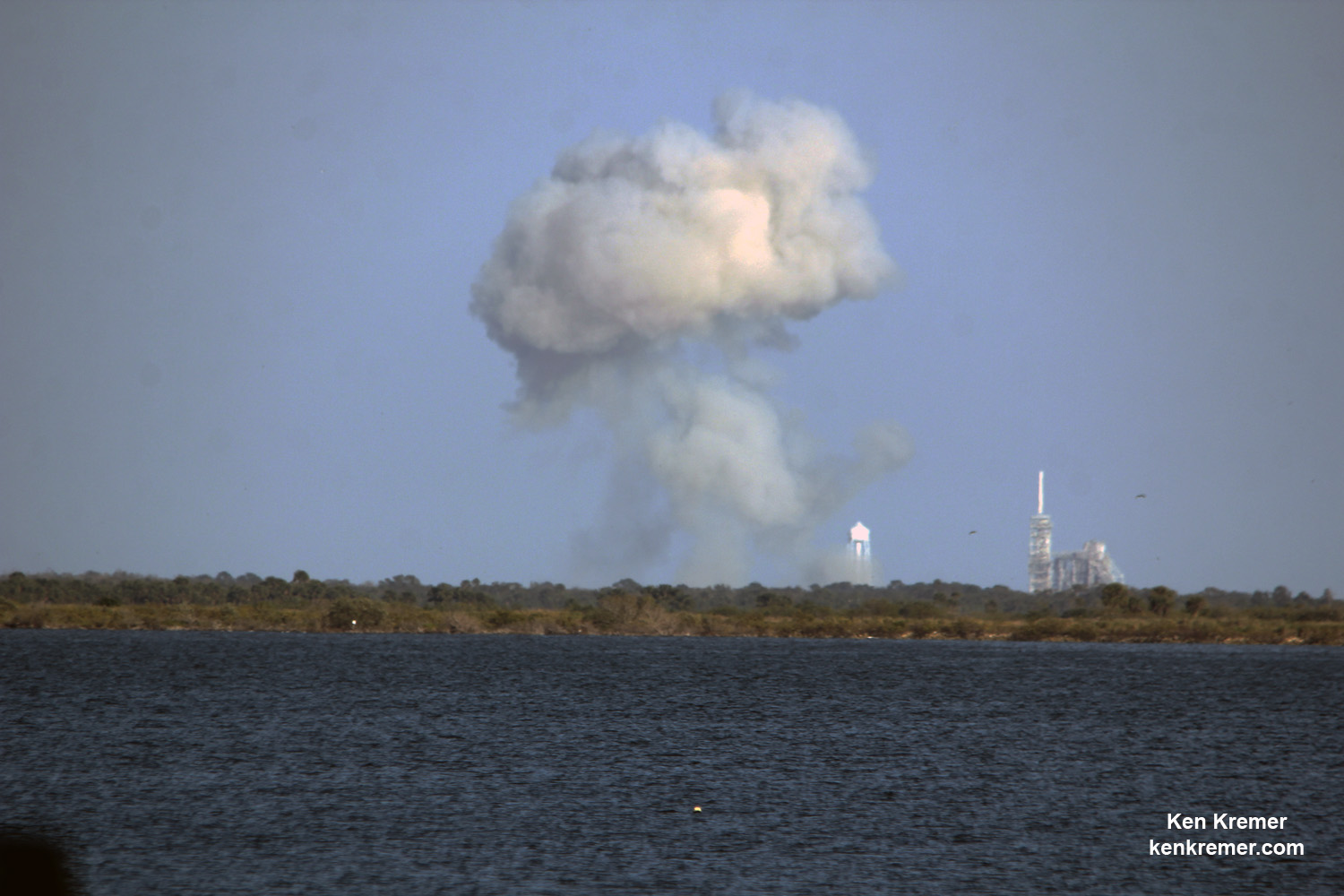
SPACE VIEW PARK/KENNEDY SPACE CENTER, FL – For the first time in more than half a decade, a rocket came to life at NASA’s Kennedy Space Center when a SpaceX Falcon 9 breathed her first fire at historic pad 39A today, Sunday, Feb. 12 – successfully completing a critical static test firing of the first stage engines that opens the door to a launch to the space station next weekend for NASA.
The hot fire test generated a huge plume of smoke exhausting out the north side of the flame trench of Launch Complex 39A at approximately 4:30 p.m. EST, Feb. 12.
The hold down engine test with the erected rocket involved the ignition of all nine Merlin 1D first stage engines generating some 1.7 million pounds of thrust at pad 39A – which has been repurposed from its days as a shuttle launch pad.
The Merlin 1D engines fired for about 3 seconds while the two stage rocket was restrained on the pad.
SpaceX confirmed the test via social media shortly after it took place.
“First static fire test of Falcon 9 at historic launch complex 39A completed in advance of Dragon’s upcoming mission to the @Space_Station,” SpaceX tweeted in a very brief announcement.
I watched excitedly from a public viewing spot at Space View Park in Titusville as the exhaust plume grew quickly in size to a gigantic grey-white colored mushroom cloud of smoke and ash, heaving out the north side of the flame trench silent since the shuttle era.
Then just as quickly the smoke cloud dissipated completely within about 10 minutes leaving barely a trace of what we can expect to see soon.
Titusville offers a prime viewing location for anyone interested in traveling to the Florida Space Coast to see this Falcon 9 launch in person.
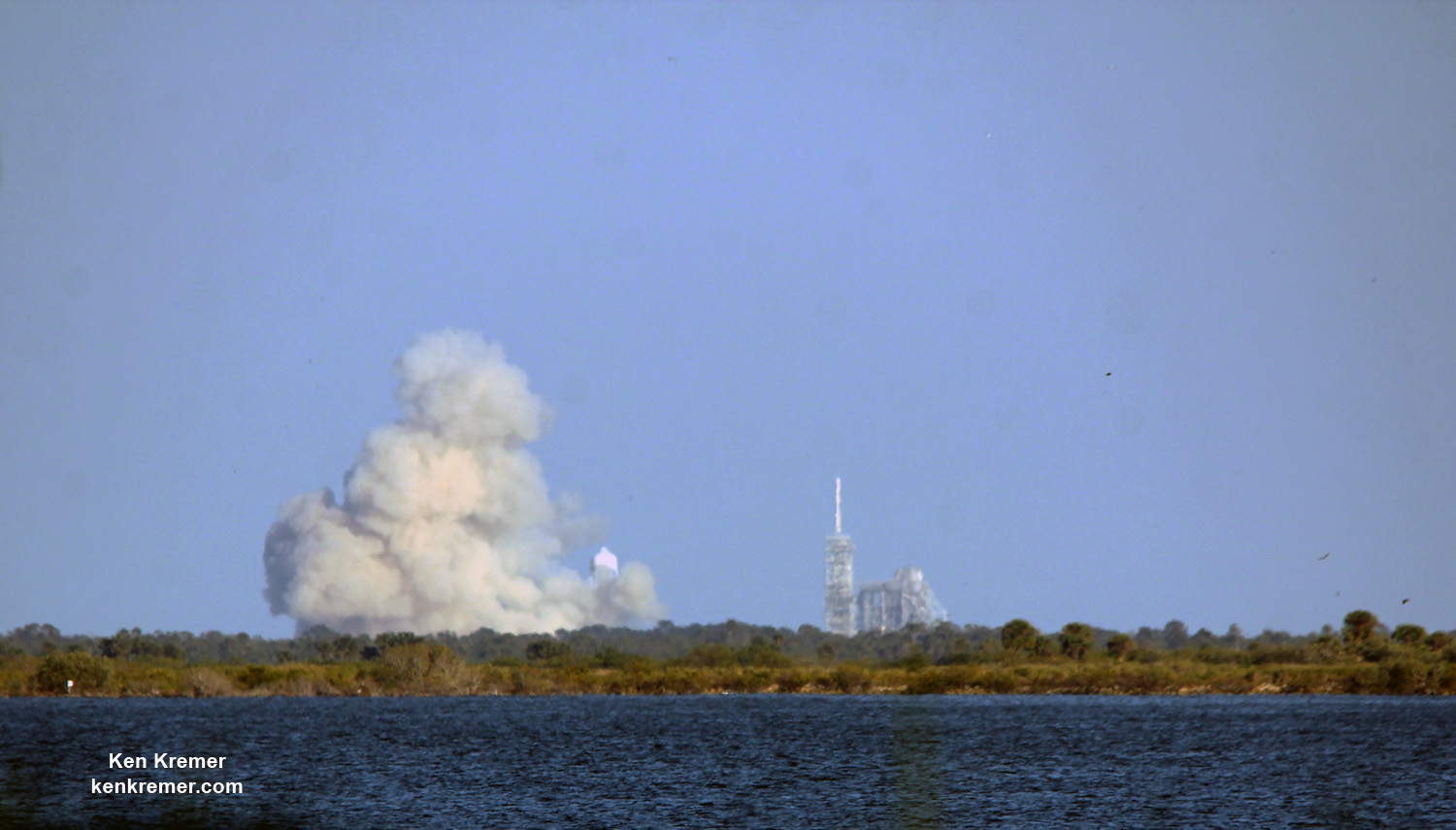
The test confirms that both the first stage engines and the rocket are suited for liftoff. Over the past few days, launch teams also tested the pad equipment, raised and lowered the rocket and conducted fit checks of the rocket at the pad.
The test had been delayed several days as technicians coped with issues until all was right to carry out the static fire test.
The positive outcome paves the path for a Falcon 9.Dragon blastoff as soon as next Saturday.
This marks the first time any rocket has stood on pad 39A and fired its engines since the retirement of NASA’s Space Shuttles in July 2011 on the STS-135 mission to the space station.
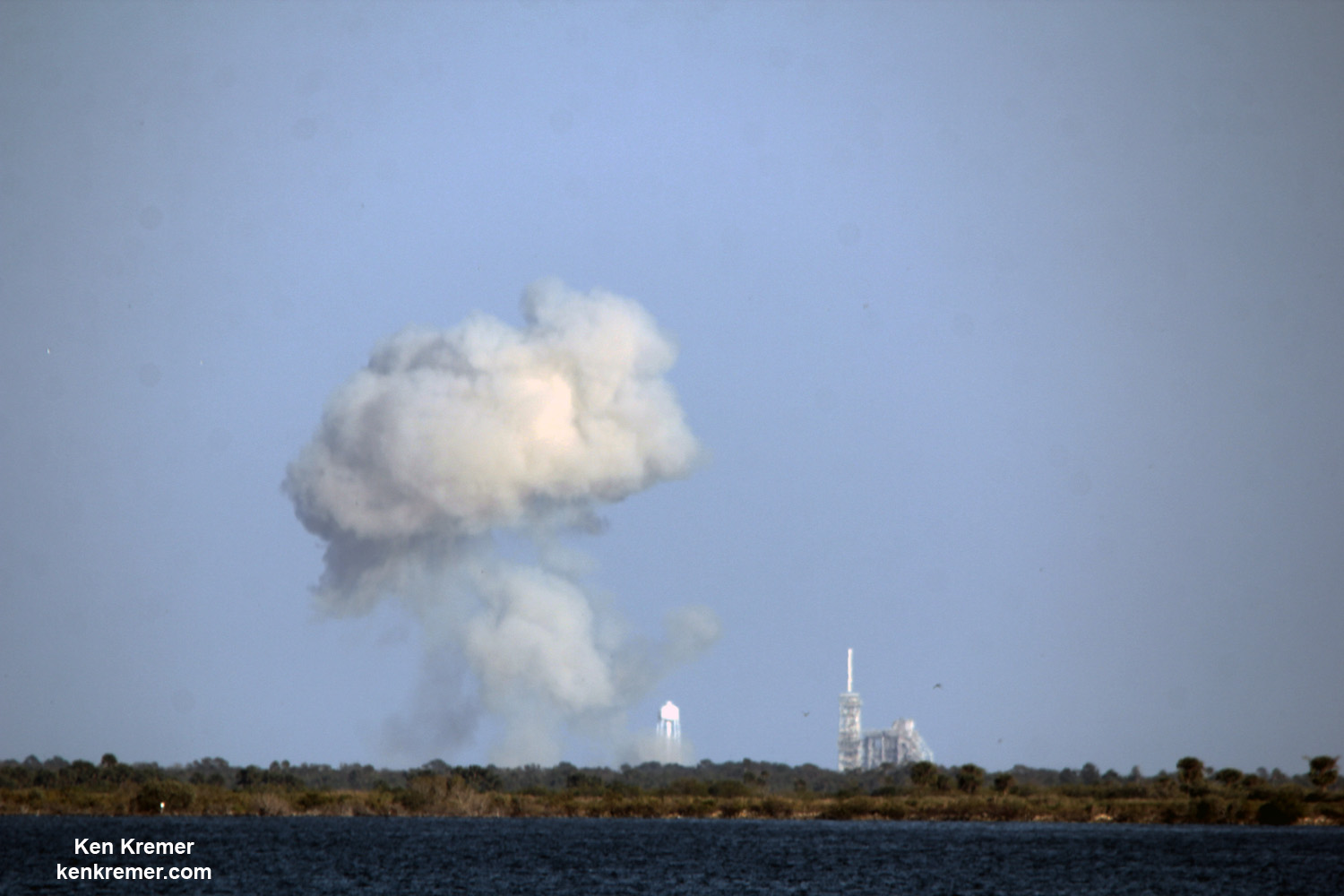
Liftoff of the Falcon 9 is slated for no earlier than next Saturday, 18 Feb 2017 on a critical cargo flight for NASA to deliver over two and a half tons of science and supplies to the six person crew living and working on the International Space Station (ISS).
The rocket – minus the payload comprising the Dragon cargo spacecraft – was rolled out of the SpaceX processing hangar at the perimeter fence and then up the incline to the top of pad 39A on Friday morning using a dedicated transporter-erector.
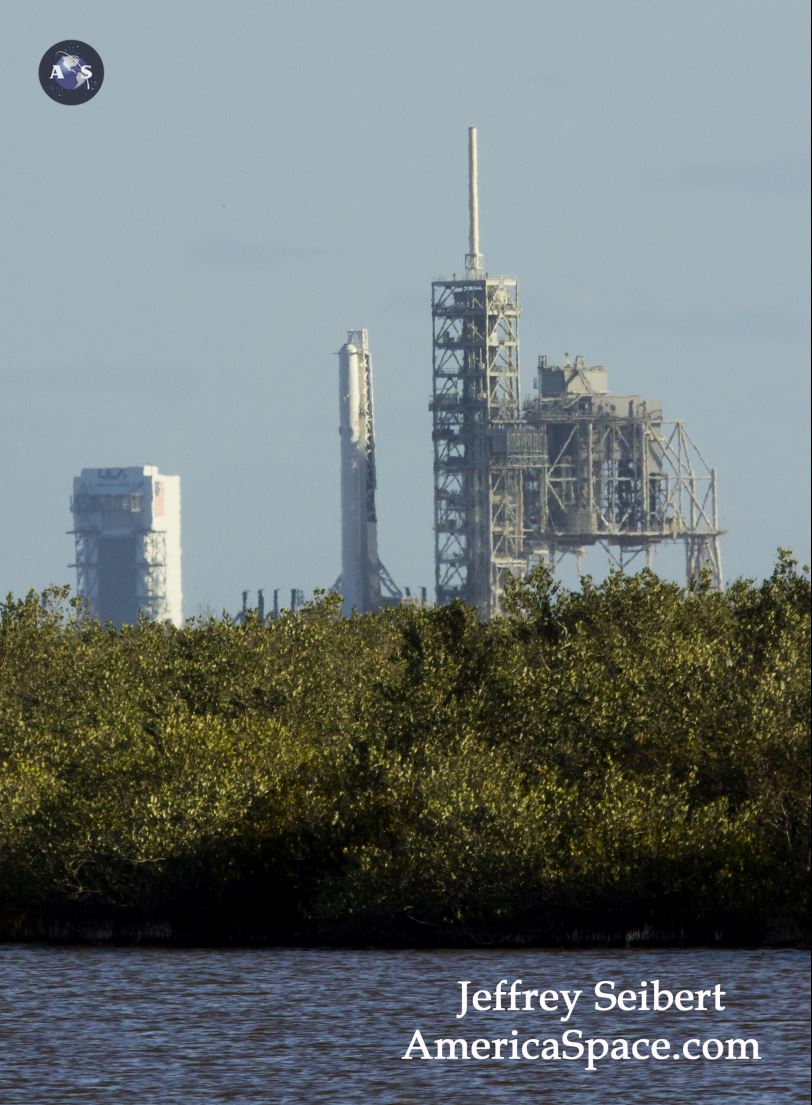
After the successful completion of the static fire test, the booster will be rolled back to the big processing hangar and the Dragon resupply ship will be integrated on top.
The historic NASA launch pad was formerly used to launch both America’s space shuttles and astronauts on Apollo/Saturn V moon landing missions.
Dragon will be loaded with more than 5500 pounds of equipment, gear, food, supplies and NASA’s Stratospheric Aerosol Gas Experiment III (SAGE III) ozone mapping science payload.
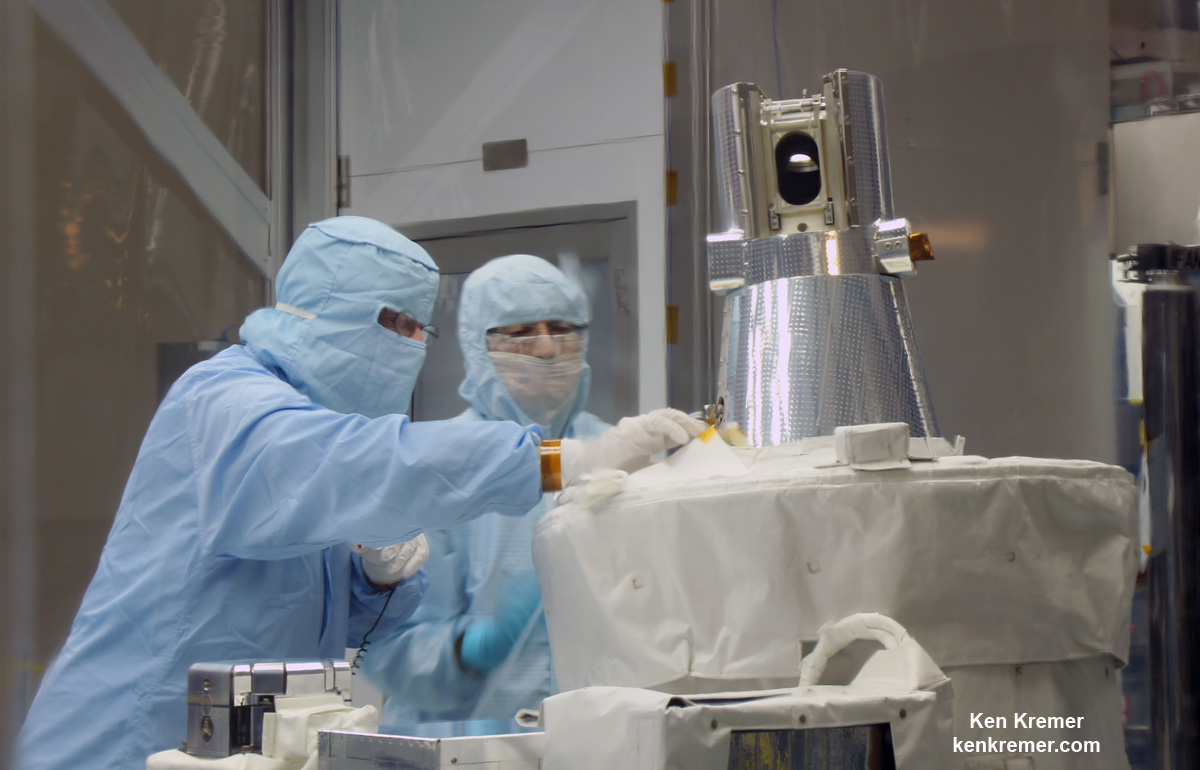
SpaceX was previously employing pad 40 on Cape Canaveral Air Force Station for Falcon 9 launches to the ISS as well as commercial launches.
But pad 40 suffered severe damage following the unexpected launch pad explosion on Sept 1, 2016 that completely destroyed a Falcon 9 and the $200 million Amos-6 commercial payload during a prelaunch fueling test.
An accident investigation revealed that a second stage helium tank burst due to friction ignition during the fueling test.
SpaceX modified the fueling procedures as a short term fix and is working on redesigning the second stage as a long term fix.
SpaceX is working to repair and refurbish pad 40. It is not known when it will be ready to resume launches.
Thus SpaceX has had to switch launch pads for near term future flights and press pad 39A into service much more urgently, speeding up the refurbishing and repurposing work which at last is sufficient to launch rockets again.
Pad 39A has lain dormant for launches for nearly six years since Space Shuttle Atlantis launched on the final shuttle mission STS 135 in July 2011.

Stay tuned here for Ken’s continuing Earth and Planetary science and human spaceflight news.
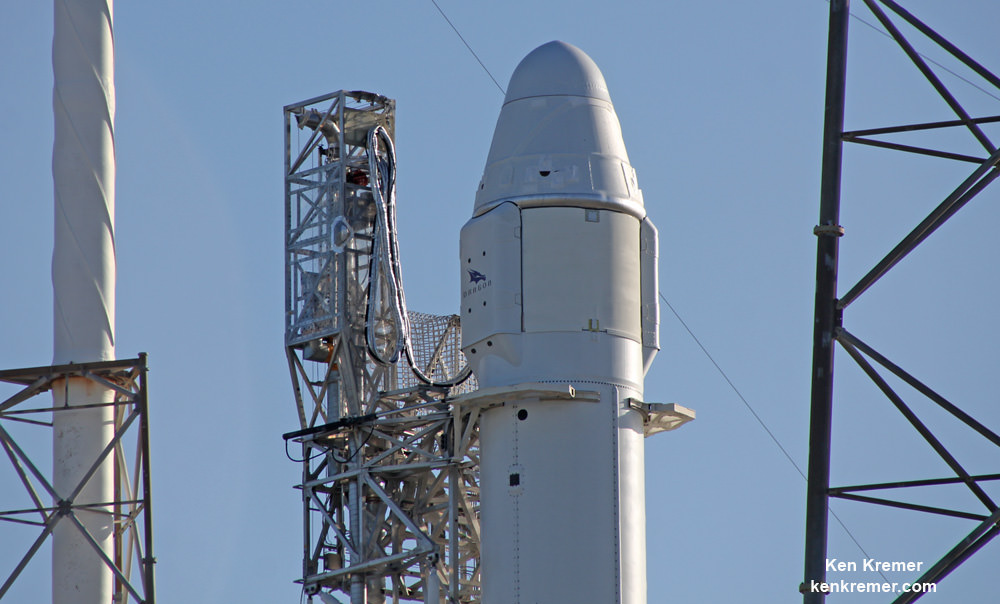

When it’s finally launched I look forward to not seeing the word “historic” on every single mention.
I should have put a wink at the end of that 😉
Or, indeed, *breathes* first fire. You might want to sort out the title’s typo! 😉
CJSF
In the Chinese zodiac, a dragon is the mightiness of the signs which symbolizes the traits of dominance and ambition. They are driven, unafraid of challenges, and willing to take risks.
Right on the Freaking Line SpaceX! You go Bro! I want to hear the breath of your dragon!
Meanwhile.. not a bad thing to remind the Chinese.
In the Chinese Zodiac, I am a Snake.. sounds iffy, but read all about it? http://www.chinahighlights.com/travelguide/chinese-zodiac/snake.htm
In fact, the Dragon doesn’t exist in nature. The Dragon was created by the imaginations of the ancient people based on the Snake, and it symbolizes power, nobleness, and greatness. It’s very common for people to see snakes, and some of them are very poisonous, resulting in them leaving a bad impression on people.”